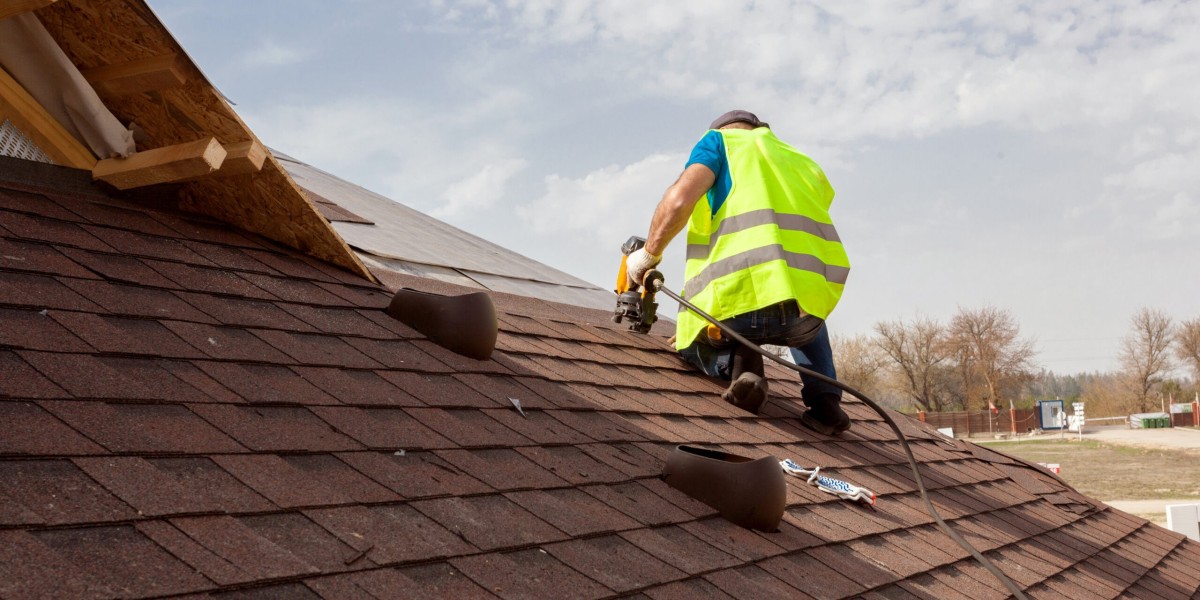Replacing your roof is a significant investment that can enhance the safety, energy efficiency, and curb appeal of your home. The type of roofing material you choose plays a crucial role in the longevity, appearance, and overall performance of your new roof. There are several options available, each with its own unique benefits and drawbacks. In this blog post, we’ll take a closer look at the most common materials used for roof replacements in Roofing Weymouth, helping you choose the best option for your home.
1. Asphalt Shingles
Asphalt shingles are the most widely used roofing material for residential homes. They are known for their affordability, ease of installation, and availability in a wide range of colours and styles. Asphalt shingles are suitable for most types of homes and can last anywhere from 20 to 30 years with proper maintenance.
Pros:
Cost-effective: Asphalt shingles are one of the most affordable roofing materials.
Variety of styles and colours: They come in a range of colours and designs to suit different architectural styles.
Easy to install and repair: Asphalt shingles are lightweight and easy to handle, making installation quicker and less costly.
Cons:
Short lifespan: While durable, asphalt shingles don’t last as long as other materials like slate or metal.
Vulnerable to weather: In extreme conditions like high winds or hailstorms, asphalt shingles can be damaged or torn off.
2. Metal Roofing
Metal roofing is becoming increasingly popular for residential homes due to its durability and energy efficiency. Made from materials like steel, aluminium, and copper, metal roofs are designed to withstand harsh weather conditions, including high winds, heavy rain, and snow. They can last between 40 and 70 years, making them a long-term investment for homeowners.
Pros:
Long lifespan: Metal roofs can last up to 70 years, depending on the material.
Weather-resistant: Metal roofs are highly resistant to extreme weather, such as high winds, hail, and fire.
Energy-efficient: Metal reflects the sun’s rays, which can help reduce cooling costs during hot summer months.
Cons:
Higher upfront cost: Metal roofing is typically more expensive to install than asphalt shingles.
Noise: Metal roofs can be noisy during heavy rain or hail, though adding insulation can help reduce the sound.
3. Clay and Concrete Tiles
Clay and concrete tiles are popular for homes with Mediterranean, Spanish, or Southwestern architectural styles. These tiles are durable, fire-resistant, and can last for up to 100 years. They offer a distinctive, attractive appearance that adds value to a home, but they are also heavy, which may require reinforcing the roof structure before installation.
Pros:
Long-lasting: Clay and concrete tiles can last 50–100 years or more.
Fire-resistant: These materials are naturally fire-resistant, providing extra protection for your home.
Aesthetically appealing: They offer a unique and attractive look that complements certain architectural styles.
Cons:
Heavy: Clay and concrete tiles are much heavier than other roofing materials and may require additional structural support.
Expensive: They tend to have a higher upfront cost due to both the material and the labour involved in installation.
Prone to cracking: These tiles can crack if exposed to heavy impacts or extreme weather conditions.
4. Slate Roofing
Slate roofing is one of the most durable and aesthetically appealing roofing materials available. Made from natural stone, slate is known for its longevity, elegance, and resistance to fire, water, and pests. A slate roof can last for over 100 years, making it one of the longest-lasting options on the market.
Pros:
Unmatched durability: Slate roofs can last well over 100 years with proper care.
Fire-resistant: Slate is a naturally fire-resistant material.
Low maintenance: Once installed, slate requires very little maintenance.
Cons:
Expensive: Slate roofing is one of the most expensive materials due to the cost of the material and its installation.
Heavy: Like clay tiles, slate is heavy and may require additional support for the roof structure.
Difficult to repair: While durable, slate can be difficult and costly to repair if damaged.
5. Wood Shingles and Shakes
Wood shingles and shakes are another traditional roofing material that provides a natural, rustic look to your home. They are typically made from cedar, redwood, or pine and can last between 30 and 50 years, depending on the type of wood and the climate. Shingles are thin and uniform, while shakes are thicker and more irregular in appearance.
Pros:
Natural look: Wood provides a beautiful, natural aesthetic that many homeowners prefer.
Good insulation: Wood is a natural insulator, helping to keep your home cool in the summer and warm in the winter.
Eco-friendly: Wood is a renewable resource and can be a more environmentally friendly option than synthetic materials.
Cons:
Requires regular maintenance: Wood shingles and shakes require frequent maintenance to prevent rot, mould, and pest infestations.
Not fire-resistant: Wood is susceptible to fire unless treated with fire-retardant chemicals.
Expensive: High-quality wood roofing materials can be costly, especially if maintenance is required frequently.
6. Synthetic Roofing Materials
Synthetic roofing materials are designed to mimic the look of natural materials like wood, slate, and clay while offering enhanced durability and lower maintenance. These materials are typically made from rubber, plastic, or polymer, making them lightweight, durable, and resistant to weather and wear.
Pros:
Lightweight and durable: Synthetic materials are often lighter and more durable than natural alternatives.
Low maintenance: Synthetic roofing materials require less maintenance than natural materials like wood or clay.
Eco-friendly: Many synthetic materials are made from recycled products, making them an environmentally conscious choice.
Cons:
Can be expensive: While generally less expensive than slate or clay, synthetic materials can still be more costly than asphalt shingles.
Less proven over time: Synthetic materials are relatively new compared to traditional roofing materials, so their long-term performance is still being evaluated.
7. Flat Roofing Materials (TPO, EPDM, PVC)
For homes with flat or low-slope roofs, flat roofing materials like TPO (Thermoplastic Olefin), EPDM (Ethylene Propylene Diene Monomer), and PVC (Polyvinyl Chloride) are popular choices. These materials are highly durable, waterproof, and offer excellent energy efficiency. They are often used for commercial buildings but are increasingly being used for residential properties with flat roofs.
Pros:
Durable and weather-resistant: These materials are designed to withstand water, UV rays, and extreme weather conditions.
Energy-efficient: Flat roofs made from TPO or EPDM reflect sunlight, helping to reduce cooling costs in the summer.
Low maintenance: These roofs require minimal maintenance compared to sloped roofs.
Cons:
Not suitable for steep roofs: These materials are designed for flat or low-slope roofs and aren’t suitable for homes with steep inclines.
Potential for pooling water: Poor drainage can lead to water pooling on flat roofs, which may cause leaks over time.
Conclusion
When considering a roof replacement, choosing the right material is key to ensuring your home is protected, energy-efficient, and aesthetically pleasing. Each roofing material comes with its own set of advantages and challenges, so it's essential to evaluate your budget, the style of your home, and the local climate before making a decision. Consult with a professional Roofing Weymouth to help you select the best option that meets your needs and will stand the test of time.








